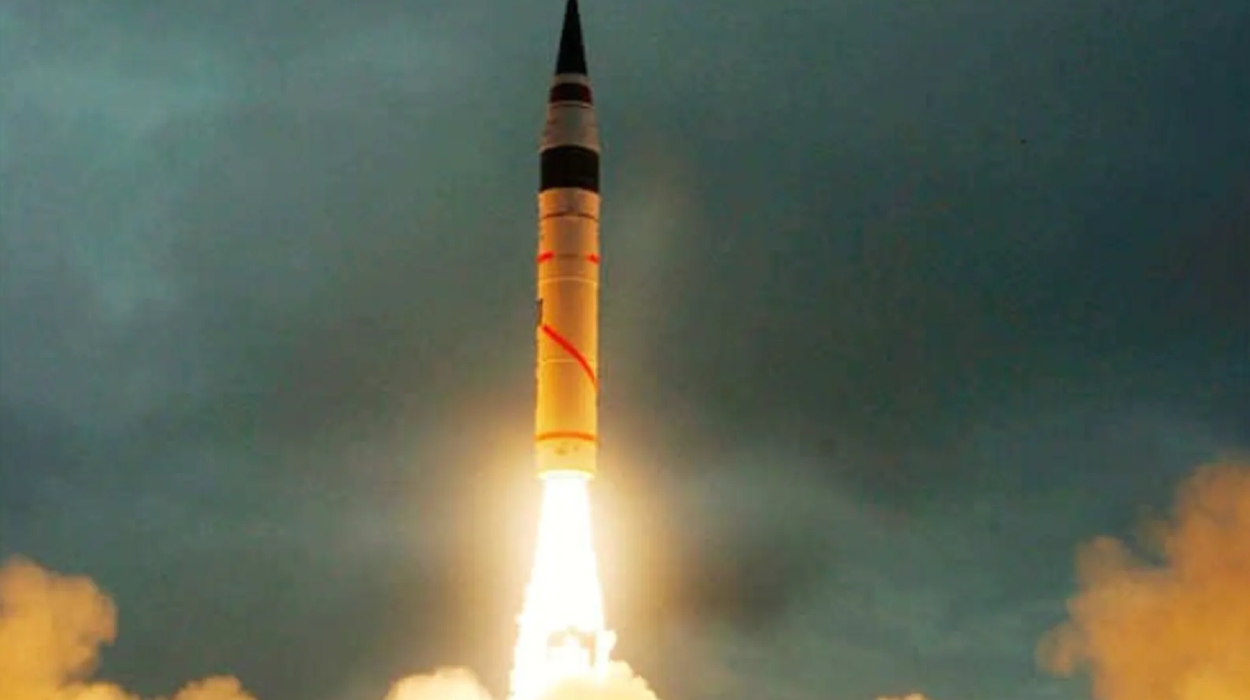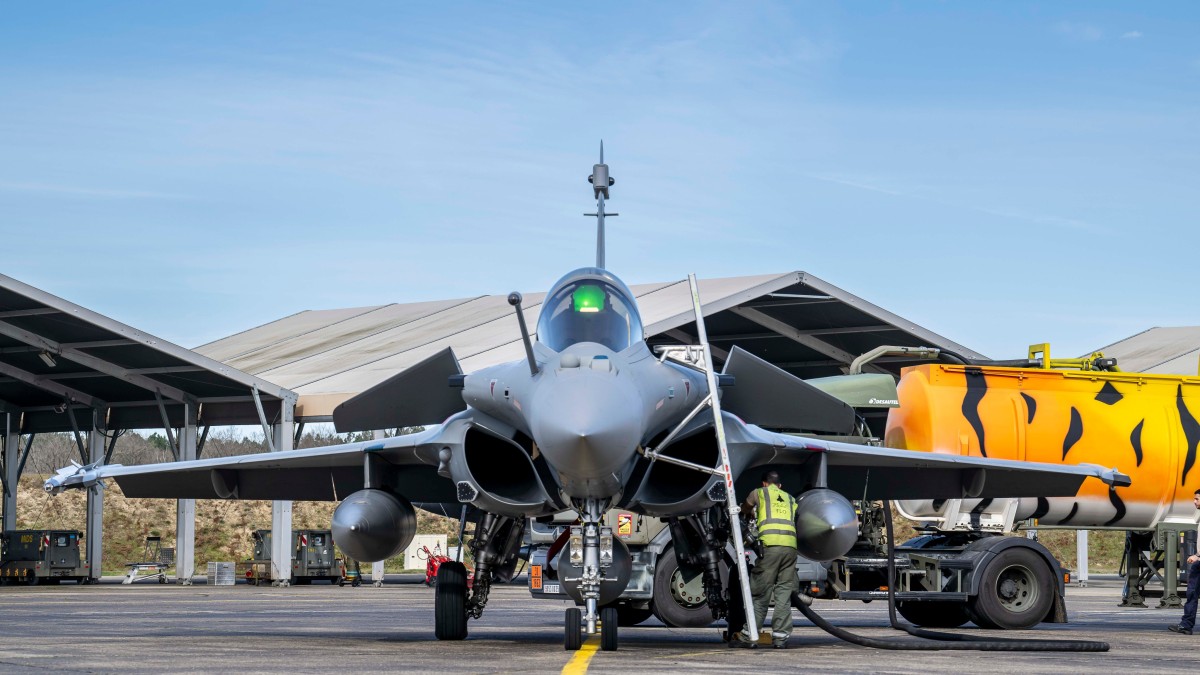“There is an underlying relationship between the will to spend (military expenditure) and the intent to kill,” wrote thinker and author Sundeep Waslekar in his book ‘A World Without War.’
A similar sentiment is reflected in the recently published annual assessment of armaments, disarmament, and international security by the Stockholm International Peace Research Institute (SIPRI).
According to SIPRI’s report titled ‘World Nuclear Forces 2023,’ as of January 2024, a staggering 12,121 warheads populated the global inventory, with a terrifying 9,585 primed for potential deployment. Russia (5580 warheads) and the United States (5044 warheads), nuclear titans locked in an uneasy embrace, commanded a combined 10,624 of these instruments of unspeakable destruction. Ominously, China has now joined the grim ranks, believed to have warheads on high alert for the first time.
Alarmingly, an estimated 3,904 of these apocalyptic payloads were actively coupled with missiles and aircraft, a 60-warhead increase from the previous year. The remaining warheads lurked menacingly in central storage facilities.
In a haunting revelation, approximately 2,100 of these deployed warheads maintained a hair-trigger state of high operational alert, poised on ballistic missiles for potential launch.
Nine countries worldwide possess nuclear arsenals: the United States, Russia, the United Kingdom, France, China, India, Pakistan, North Korea, and Israel. In 2023, all these nuclear-armed states continued to modernize their arsenals, with several deploying new nuclear-armed or nuclear-capable weapon systems.

India Overtakes Pakistan In Nuclear Count
In the volatile nuclear dynamic between India and Pakistan, a sinister shift has occurred. India, once trailing its rival, now possesses 172 nuclear warheads, surpassing Pakistan’s 170 for the first time. India’s steady accumulation since 2014 has narrowed the gap, fueled by its determination to counter Pakistan’s perceived conventional military imbalance.
According to SIPRI’s report, India potentially added eight nuclear warheads in the past year, increasing from 164 to 172. It also estimates that Pakistan’s nuclear stockpile remains unchanged at 170 warheads.
The report notes, “It has long been assumed that India stores its nuclear warheads separately from its deployed launchers during peacetime. However, the country’s recent moves towards placing missiles in canisters and conducting sea-based deterrence patrols suggest that India could be shifting towards mating some of its warheads with their launchers during peacetime.”
In 2023, both India and Pakistan continued to advance their respective nuclear delivery systems. While Pakistan remains the primary focus of India’s nuclear deterrent, India seems to be increasingly prioritizing longer-range weapons capable of reaching targets across China.
These weapons contribute to the development of India’s mature nuclear triad, comprising aircraft, land-based missiles, and nuclear-powered ballistic missile submarines (SSBNs).
India’s nuclear arsenal includes aircraft such as Mirage 2000H, Jaguar, and Rafale, land-based missiles like Prithvi and Agni, and sea-based missiles like Dhanush and K-4/K-15.
On the other hand, Pakistan has never publicly disclosed the size of its nuclear arsenal. Limited official data and sensationalized news reports about Pakistan’s nuclear capabilities make it difficult to accurately assess the number and types of Pakistani warheads and delivery vehicles.
Pakistan does not adhere to a no-first-use (NFU) doctrine and reserves the right to use nuclear weapons first in wartime, mainly due to what it perceives as an imbalance in the strength of its conventional forces compared to India.
Pakistani nuclear forces comprise aircraft like Mirage and F-16, land-based missiles including Abdali, Ghaznavi, Shaheen, Ghauri, Nasr, Ababeel, and Babur, as well as sea-based missiles like Babur 3 SLCM.
India’s capability to launch nuclear-tipped missiles through air via its Rafale, Mirage, and Jaguar fighters outscores Pakistan. India can strike, in case of a nuclear war, deep and with pinpoint accuracy.
One critical reason India selected the Rafale over the Eurofighter Typhoon was that Paris was accepting of the idea that the Rafale fighters would become part of the air segment of India’s nuclear triad that could dramatically shift the balance of power in India’s favor.

China Flexes Its Nuclear Supremacy
China, however, stands as the undisputed nuclear heavyweight in the region, boasting a formidable 500 warheads in its military stockpile.
Over the past year alone, China’s nuclear might has swelled by a staggering 90 warheads ( escalating from 410 to 500), with expectations of continued growth. It’s important to highlight that China has never officially disclosed the size of its nuclear arsenal. Much of the analysis provided here is based on information sourced from the US Department of Defense (DOD).
Hans M. Kristensen, Associate Senior Fellow at SIPRI’s Weapons of Mass Destruction Programme and Director of the Nuclear Information Project at the Federation of American Scientists (FAS), noted, “China is expanding its nuclear arsenal faster than any other country.” China is currently undergoing a significant modernization and expansion of its nuclear capabilities, expected to persist over the next decade.
Projections indicate that China could potentially match or surpass both Russia and the USA in terms of deployed intercontinental ballistic missiles (ICBMs) in this period. However, while China’s ICBM numbers are expected to rise, its overall nuclear warhead stockpile is forecasted to remain smaller compared to these nations.
Moreover, China may now be deploying a limited number of warheads on missiles during peacetime. Its nuclear forces encompass H-6/H-20 bomber aircraft, DF-5/DF-41 land-based missiles, and JL-2/JL-3 sea-based missiles.
“China’s recent moves towards placing solid-fuelled missiles in silos, conducting sea-based deterrence patrols and, potentially, developing a launch-on-warning (LOW) capability suggest that China might have started mating a small number of its warheads (possibly around 24, corresponding to one missile brigade and one fully loaded ballistic missile submarine) with their launchers”, report says.
Recent shifts in China’s nuclear strategy, particularly its deployment of rapid-launch solid-fuel missiles and potential development of a Launch on Warning (LOW) capability, have sparked widespread discussions on its nuclear doctrine, including its ‘no-first-use’ (NFU) policy.
Since 2022, the US Department of Defense (DOD) has suggested that China is adopting an ‘early warning counter strike’ strategy, akin to a LOW posture, utilizing ground- and space-based sensors for swift missile launches before potential threats are neutralized. The US DOD reports that China has deployed at least three early-warning satellites to support this strategy.
Raw Materials: Highly Enriched Uranium (HEU) & Plutonium
But what special raw materials are needed to make these nuclear warheads, and where do they come from?
Materials capable of sustaining an explosive fission chain reaction are essential for all types of nuclear explosives, from basic fission weapons to advanced thermonuclear ones. HEU and plutonium are the most common of these fissile materials.
Both HEU and plutonium are derived from natural uranium, which consists mostly of uranium-238 (U-238) with a small percentage of uranium-235 (U-235). Enrichment, usually achieved through gas centrifuges, raises the concentration of U-235. Low-enriched uranium, containing less than 20% U-235, is suitable for power reactors, while HEU, with at least 20% U-235, is utilized for weapons, typically enriched to over 90% U-235. Plutonium is produced in nuclear reactors when U-238 in the fuel absorbs neutrons.
SIPRI reports Russia (680 tonnes), the USA (483 tonnes), and France (29 tonnes) leading in HEU stocks. Material is typically enriched to 90–93% U-235, which is typically considered weapon-grade. China (14 tonnes), India (5 tonnes), and Pakistan (5 tonnes) also possess HEU.
In terms of separated plutonium stocks, Russia (192 tonnes), the UK (119 tonnes), France (98 tonnes), and the USA (87 tonnes) are ahead, while China (3 tonnes), India (10 tonnes), and Pakistan (0.54 tonnes) also have substantial amounts.
Number of Nuclear Warheads Declined, But…
While the overall number of nuclear warheads has declined due to the dismantling of retired weapons by the United States and Russia, the lethality of active warheads continues to escalate.
The weaponization of artificial intelligence and the dissolution of arms-control treaties have ushered in a new era of nuclear uncertainty as the nuclear superpowers relentlessly upgrade and modernize their warheads, delivery systems, and production facilities.
In this grim landscape of nuclear brinkmanship, the pursuit of destructive might knows no bounds, casting a dark shadow over the future of humanity itself.
- Shubhangi Palve is a defense and aerospace journalist. Before joining the EurAsian Times, she worked for E.T. Prime. In this capacity, she focused on covering defense strategies and the defense sector from a financial perspective. She offers over 15 years of extensive experience in the media industry, spanning print, electronic, and online domains.
- Contact the author at shubhapalve (at) gmail (dot) com.




